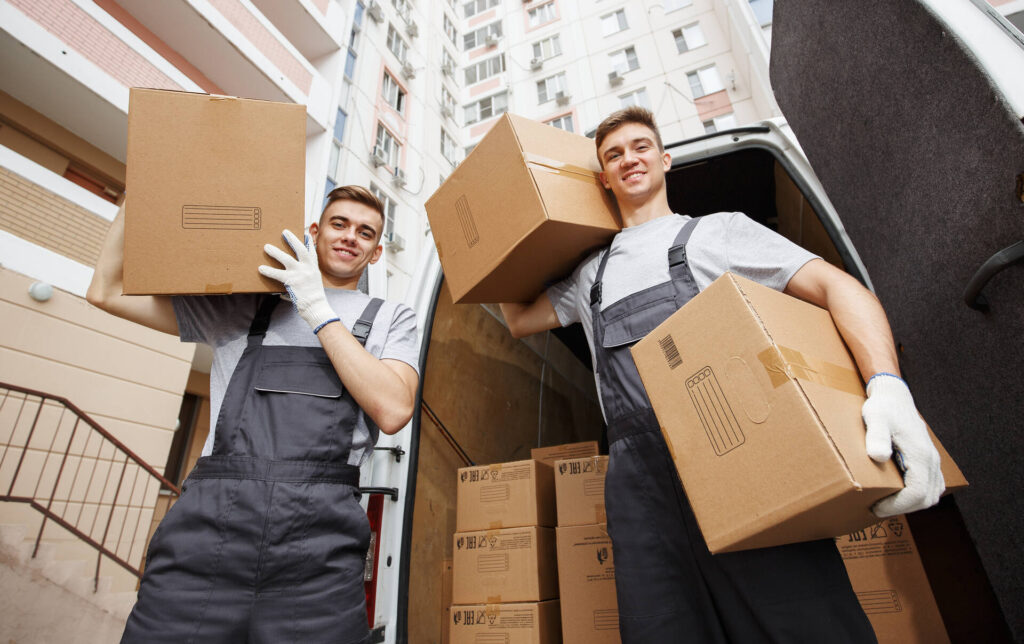Long-distance moving can be an exciting adventure, but the thought of packing up your entire life and hauling it across miles of terrain can feel overwhelming. However, fear not! We will guide you through the easiest way to pack for a move, ensuring a smooth and stress-free transition to your new home. With our expert tips and tricks, you’ll discover efficient packaging strategies that will save you time, energy, and headaches along the way.


The easiest way to pack for a move is to declutter beforehand, create a packaging plan, use proper materials, label boxes, and enlist the help of professionals for a smooth and efficient relocation.
Relocating to a new home is one of the most stressful events in a person’s life, but with proper planning and preparation, the process becomes much smoother and less stressful. One of the key elements of a successful and efficient relocation is creating a pack and moving plan. A well-organized approach not only saves time and effort but also ensures that nothing gets left behind or misplaced during the transition. By having a comprehensive checklist in place, you can stay organized and keep track of your belongings throughout the entire relocation process.
Relocating to a new state involves numerous tasks, but with a well-organized approach, you can make the packing-to-move process much smoother and less overwhelming. One essential tool in your arsenal is a comprehensive checklist. This invaluable resource will ensure that you cover all your needs and stay on top of the packaging process. Here are some valuable tips to help you craft a checklist that covers all your relocation needs:
Downsizing and decluttering before relocation is a crucial step that can significantly simplify the process. By taking the time to evaluate and declutter your belongings, you’ll reduce the number of items you need to box up and transport.
Begin by sorting your belongings into categories, such as keep, donate, sell, or discard. This helps you assess the necessity and value of each item objectively. Consider the 80/20 rule, which suggests that we tend to use only 20% of our belongings regularly. Evaluate items based on the frequency of use and consider letting go of those rarely or never used.
When deciding whether to keep an item, ask yourself questions like: Do I use it? Do I love it? Does it hold sentimental value? If an item doesn’t align with any of these criteria, it may be time to get rid of it. Identify duplicate items and keep only the ones you need or love the most. Letting go of duplicates will help free up space and reduce clutter. Donate old furniture or other items you know you will not move, such as books or old kids’ toys, and for the items that have some value, you can organize a garage sale. Take a look at this video for excellent tips on how to make a successful garage sale.
When cross-country moving to another state having the right packing supplies on hand is essential for a smooth and efficient process. Being well-prepared with the necessary materials ensures that you can pack your belongings securely and protect them during transportation. To avoid last-minute scrambling and potential delays, it’s important to get the essential supplies on time. Here are some key tips to help you stay organized and ensure you have everything you need:
When it comes to boxing up, a room-by-room approach can greatly simplify the process and ensure that nothing gets overlooked. By breaking down the packaging process by room, you can tackle one area at a time, staying organized and efficient. Let’s explore how to approach the process for some of the key rooms in your home.
Begin by boxing up non-essential items such as decorative pieces, books, and electronics. Remove any wall hangings or artwork carefully, ensuring they are adequately protected. Disassemble furniture, if possible, and label all the components for easy reassembly.
Start by packaging off-season clothing and linens. Leave out a few outfits and essentials for the remaining days before the big day. Safely box up delicate items like jewelry and accessories, ensuring they are well-protected. Consider using wardrobe boxes for hanging clothes to minimize wrinkles.
Begin by decluttering and organizing kitchen items. Pack dishes, glassware, and silverware using proper padding to prevent breakage. Consider wrapping fragile items in packaging paper or bubble wrap. Label boxes containing fragile kitchenware prominently. Dispose of any perishable food items and pack pantry staples securely.
Start by sorting through the bathroom supplies and discarding expired or unused items. Package toiletries securely, sealing bottles and containers to prevent leaks. Use small boxes or plastic bins to organize and box up items like towels, toiletries, and cleaning supplies.
Organize and put away important documents, files, and office supplies separately. Use labeled folders or document holders to keep papers organized. Safely wrap up electronics such as computers, printers, and peripherals, ensuring cables and cords are neatly wrapped and labeled for easy setup at your new location.
Don’t forget about the remaining rooms in your home, such as the dining room, basement, garage, and attic. Apply the same room-by-room approach to declutter, sort, and pack items, ensuring they are properly labeled and protected.
Efficient packing requires special attention to fragile items, organization, and space utilization. When dealing with fragile items like dishes and glassware, wrap each piece individually in bubble wrap or packing paper and place them securely in sturdy boxes, clearly labeled as “Fragile.” Organize boxes by labeling them with the room they belong to and provide a brief description of their contents.
Consider using color-coded labels or stickers for further categorization. To maximize space, disassemble larger furniture and store smaller items in empty spaces within drawers, cabinets, or suitcases. Utilize vacuum-sealed bags for compressible items like clothing and bedding. By embracing these techniques, you’ll ensure the safe transportation of delicate items, stay organized, and optimize the available space during your cross-country move.

Moving across the country can be physically and mentally demanding. To alleviate some of the stress and ensure a smoother transition, consider hiring professional movers. They can efficiently pack and handle your belongings, saving you time and energy. With their expertise, they can ensure proper protection during transit.
Movers have the necessary equipment and manpower for heavy lifting, minimizing the risk of injuries. By hiring movers, you delegate the physical labor and logistics to professionals, making your cross-country move more organized and less stressful.

Before you choose a long-distance moving company, make sure you learn more about the services that company provides, as you don’t know what kind of services you might need down the road. Also, if you use packing and car shipping services alongside storage and other services, that will most certainly speed up your whole relocation process.
By hiring movers for packing services, not only that your belongings will be better protected from any potential damage during the transit, but you will get full insurance coverage for those items. Most reliable companies, like Trico Long Distance Movers, will offer this kind of deal.
Relocation can be an overwhelming and challenging task, but with the right approach, it doesn’t have to be. By following our tips on moving and how to pack, you can prepare for your cross-country relocation with ease. Embrace room-specific techniques, such as strategies for packaging fragile items and maximizing space utilization. Hire professional movers to alleviate the physical and logistical burdens, ensuring a smoother transition. Consider utilizing multiple long-distance services to expedite the moving process.
At Trico Long Distance Movers, we wish to make your relocation stress-free and efficient. Contact us today to discuss your relocation needs, and let us provide you with a customized solution tailored to your requirements. Don’t hesitate to reach out to Trico Long Distance Movers and experience a seamless and hassle-free cross-country relocation. Your new adventure awaits!
It is advisable to start at least 4-6 weeks in advance. This time frame allows you to plan and organize your belongings systematically, declutter, and ensure a stress-free packing process. Starting early gives you ample time to be efficient and address any unexpected challenges that may arise.
Efficient labeling is key to staying organized. Use a permanent marker to clearly label each box with the room it belongs to and provide a brief description of its contents. You can also use color-coded labels or stickers to further categorize boxes by room or priority. Keeping an inventory list or using a mobile app to track the contents of each box will help you quickly locate specific items without the need to unpack everything.
While policies may vary among moving companies, there are certain items that are typically not transported by movers. These items include hazardous materials such as flammable, explosive, or corrosive substances, perishable food items, plants, pets, valuable documents, and personal items of high sentimental value. It’s best to check with your moving company for a detailed list of items they may not transport and make alternative arrangements for their safe transportation.
Perishable items, such as fresh food, open containers, or refrigerated items, are not recommended for long-distance transportation due to the risk of spoilage and potential damage. It’s advisable to consume or donate perishable food items before relocation. For frozen or refrigerated goods, consider using coolers with ice packs during transportation if the distance is short. Alternatively, you may want to consider donating these items to a local food bank or giving them to friends or neighbors who can use them.